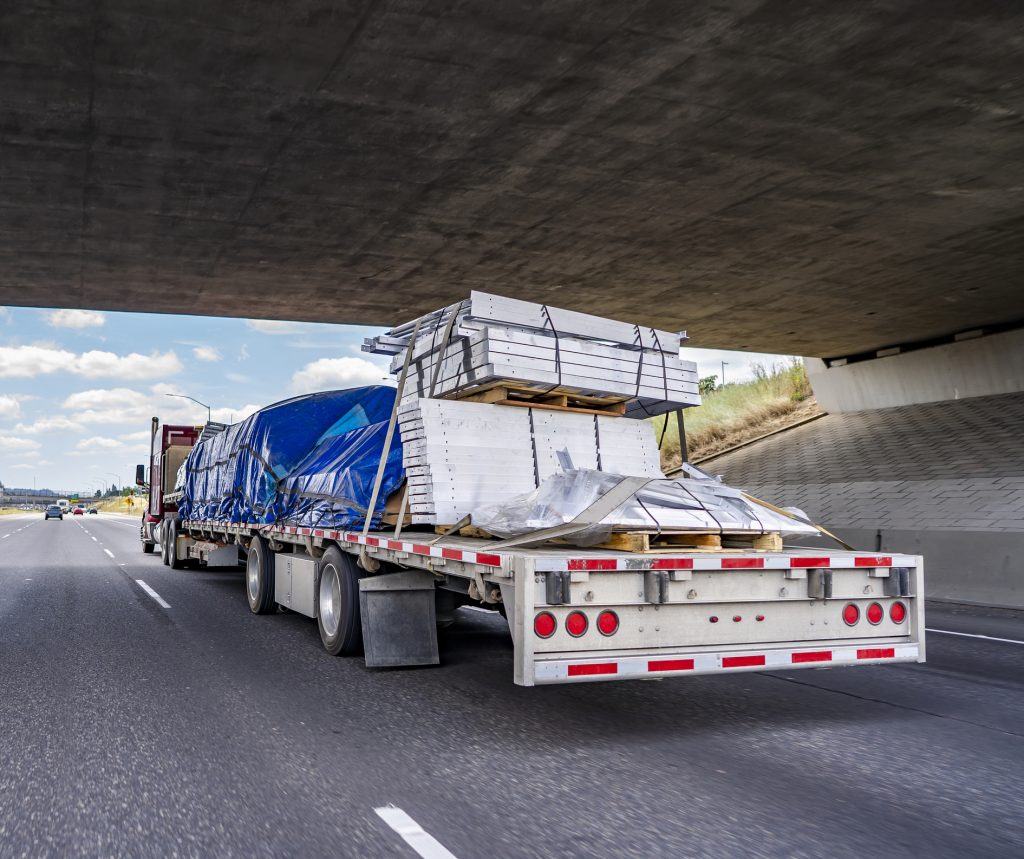According to recent data, flatbed shipping has been on the rise due to increased consumer demands and increased imports. But flatbed shipping isn’t without its challenges. This post will explore the difficulties of transporting non-enclosed cargo and four ways that businesses can improve their flatbed shipping performance.
Challenges of Flatbed Shipping

Flatbed specialized transportation presents some unique challenges. This type of shipping is highly affected by weather and changing conditions of America’s roads, which can create some unique obstacles that companies will have to overcome.
Added to this are the logistical challenges of securing drivers, scheduling shipments, and keeping up with the fluctuating market. What works during one portion of the year may not work in the next.
How to Respond Effectively
Responding to these challenges demands agility and commitment. Here are some specific ways companies can respond to the challenges of flatbed shipping:
Understand the Demands of the Market
Conventional wisdom has emphasized predictable patterns in the open deck marketplace. But in recent years, these patterns have been destabilized by industry events, regulations, and changes in consumer spending.
The end result is a market that is inconsistent and largely unpredictable. That may sound like bad news, but it can actually help your company stay prepared to adapt to a changing landscape. Those who provide flatbed specialized transportation must especially work to maintain efficient capacity networks, reduce their total mileage, and procure reliable personnel and drivers.
If you’re a business owner, your best bet is to partner with a provider who has the industry experience to understand these changes and can adapt accordingly. Doing so will ensure your business remains flexible and flourishing regardless of external circumstances.
Examine Your Procurement Policies
Many businesses find that their business goals evolve over time. If so, regular procurement bids can help providers regulate the number of their shipments and the quality of their service.
As we noted above, the market tends to shift and change in ways that are not always predictable. Annual procurement bids are a great way to remain flexible and avoid getting locked into problematic situations for an extended period. Quarterly reviews of your procurement exercises may help keep up with the shifts that occur between seasons—this is especially true for businesses that rely on seasonal freight.
You may also want to check with shipping providers who offer seasonal discounts or offer a larger capacity during the spring or summer months. Getting a deal may require you to plan ahead, but doing so can maximize your company’s ability to adapt to today’s changing landscape.
Analyze Your Tools and Tech
Knowledge is power. Your company wants the tools and technology to monitor every step of the flatbed shipping process.
Today’s supply chain technology can give your business an edge by providing to-the-minute data on your shipments. For business owners, this freight visibility is essential in understanding your supply chain and helping you manage your inventory and adapt to supply and demand fluctuations.
Consider using a third-party logistics (3PL) provider. Ideally, a 3PL has the technology to devise supply-chain strategies and route guidance that can help you optimize your supply chain process. R2 Logistics offers a Transporation Management System that increases visibility and control over your shipments, keeping your business adaptable and thriving.
Be Prepared with the Right Partners
You have better things to do than sweat over the details of your flatbed shipping processes. That’s why it’s essential to form the right partnerships to enhance your business’s strategy and efficiency. R2 Logistics is here for you, offering supply chain solutions that help your business flourish. When you’re ready to take the next step, contact us, and we’ll provide the tools to help your business succeed.
